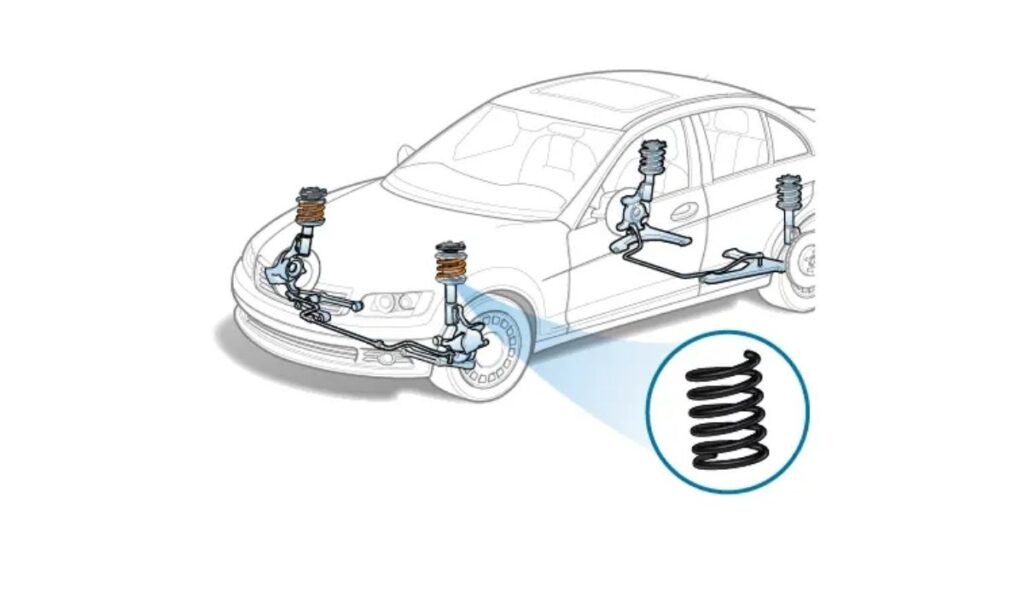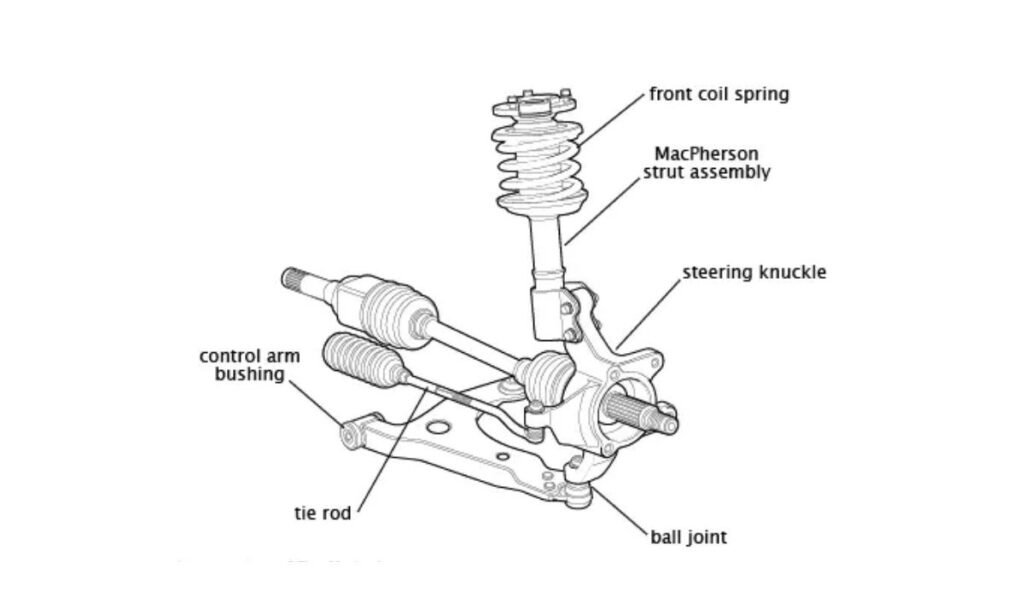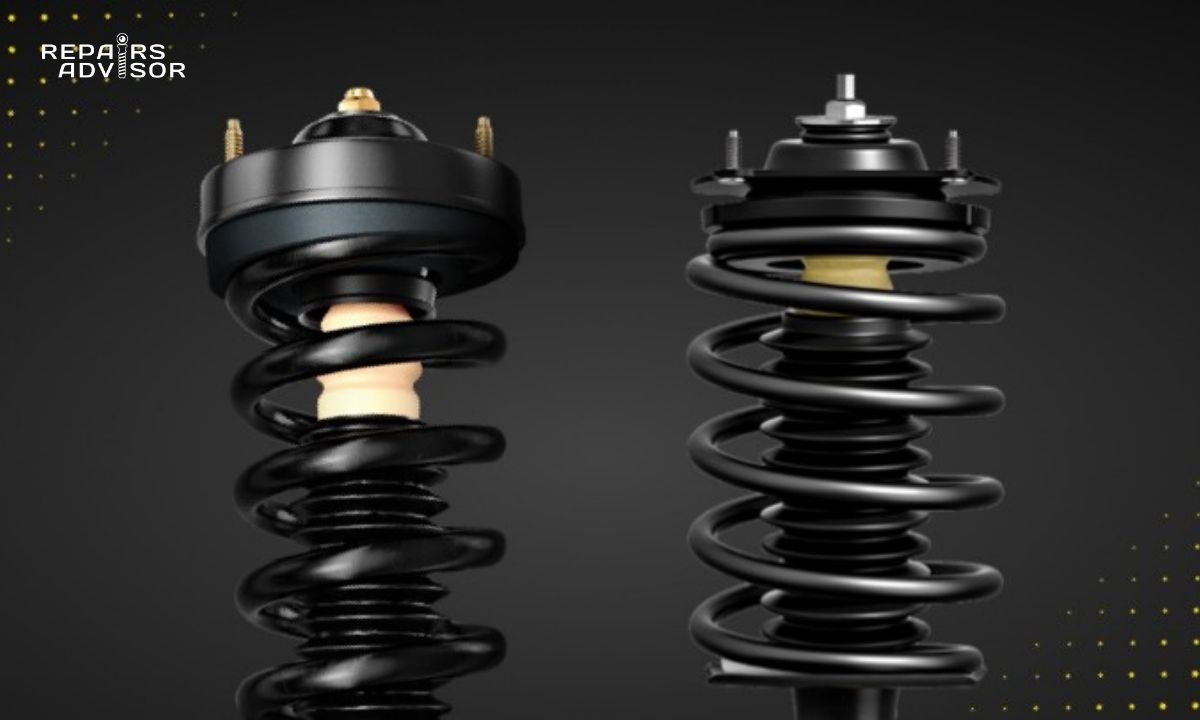Ever notice how your car smoothly glides over bumps, or maintains its height even with passengers and cargo? A big part of that magic comes from your front coil springs. These robust helical springs are essential components of your vehicle’s suspension system. Their primary jobs are to support the entire weight of your car at the axle where they’re mounted and to maintain your vehicle’s correct ride height. They also work tirelessly to allow your suspension to move up and down, absorbing shocks and adapting to every change in road condition, ensuring a comfortable and controlled ride.
But like all hard-working components, coil springs can wear out or even break. When they fail, it significantly impacts your car’s handling, comfort, and even safety.

How to Tell if Your Front Coil Spring is Failing
Catching a bad front coil spring early can save you from a rough ride and potential damage to other suspension components. Here are the key symptoms to watch out for:
- Knocking Noise When Going Over Bumps:
- This is a very common audible sign. If you hear a distinct knocking, clunking, or banging noise coming from the front of your car, particularly when you drive over bumps, potholes, or uneven surfaces, it could indicate a failing coil spring. This sound often occurs because the spring might be cracked, broken, or has lost its tension, allowing metal-on-metal contact where it shouldn’t.
- Vehicle Ride Height is Low (Saggy Appearance):
- Your car’s stance can tell you a lot. If you notice that the front end of your vehicle appears visibly lower than it used to, or if one side (left or right) is noticeably lower than the other, it’s a strong indicator of a worn, collapsed, or broken coil spring. The spring is no longer able to support the vehicle’s weight effectively, causing that side to sag. This impacts ground clearance and changes the entire vehicle’s geometry.
- Harsh Ride or Excessive Bouncing:
- If the spring is weakened or broken, it can’t properly absorb road impacts. This leads to a harsher, stiffer ride, where you feel every bump more acutely. Conversely, if the spring is completely collapsed, the vehicle might feel like it’s bottoming out or bouncing excessively after hitting a bump, as the shock absorber has nothing left to work against.
Front Coil Spring Repair Advice (Safety First!)
When front coil springs fail, they must be replaced. This is not a DIY job for the inexperienced due to the extreme danger involved.
- Always Replace as a Set:
- Front coil springs should ALWAYS be replaced as a set (both left and right side). Springs wear out over time, losing their tension and height. Replacing only one side will lead to an uneven ride height and unbalanced suspension performance, which negatively impacts handling and tire wear.
- Wheel Alignment is Essential After Replacement:
- Replacing coil springs directly affects your vehicle’s suspension geometry. Therefore, a four-wheel alignment is strongly recommended (and often mandatory) immediately after the coil springs are replaced. This ensures your wheels are correctly angled for proper handling, stability, and to prevent rapid, uneven tire wear.
- Extreme Caution is Paramount for Removal:
- EXTREME CAUTION must be used when removing a coil spring, especially if it’s still compressed by the vehicle’s weight or part of a strut assembly. These springs are under an enormous amount of pressure (think thousands of pounds of force) and can release violently if not handled with proper spring compressors and safety protocols. Improper removal can cause severe injury or even death. This is why this job should always be left to a qualified professional mechanic who has the specialized tools and training.

Your Repair Advisor’s Take:
Your front coil springs are fundamental to your car’s ride comfort, handling, and structural integrity. Ignoring the signs of a bad coil spring whether it’s persistent knocking, a noticeable sag, or a harsh ride can compromise your vehicle’s safety and lead to accelerated wear on other costly suspension components like shock absorbers, tires, and ball joints.
Don’t compromise your safety or comfort! A failing coil spring needs immediate attention from a professional.
For accurate diagnosis and safe replacement, always consult a qualified automotive mechanic. They have the specialized knowledge, experience, and crucial safety equipment (like hydraulic lifts and heavy-duty spring compressors) to handle this dangerous job correctly. Get your smooth ride and proper vehicle stance back – schedule a suspension inspection today!
